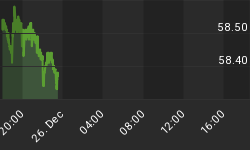US Treasury 10-year yields recently hit seven year highs. In the case of bonds, getting high is not a good thing; it means that the value of your bond is declining. It means that the cost of your debt is increasing. It means that the leverage you have used since 1980/81 to make a pile of dough in real estate is turning against you.
This is not the only reason to worry. When Brett Kavanaugh got his 50th vote, the Republican dream, born in 1973 with Roe v Wade (410 U.S. 113 -- at which point it was a nightmare), came true. There is an old saying on Wall Street, which came from the battlefields of Europe: Buy on the cannons; sell on the Trumpets. The trumpets have sounded. Where do you go from here?
If you have made a bunch of money in the financial markets over the past few, or many years, the time has come to remove some of your chips from the table. The Rothschild’s were said to have known first about the English/Prussian victory at Waterloo because their fleet of carrier pigeons arrived soon after the cannons went silent. Many years later, when asked how he got so rich, the family Patriarch said: “I sold too soon”.
Chart of 10-Year US Treasury Bonds

(Click to enlarge)
You will notice from this chart that the downtrend line, starting after the spike in 1981, when long bonds got to 15 percent, and short rates went over 20 percent, has been broken. It is reasonable to assume that rates will rise, and not just for a few months, for several decades. It might be a good idea to acquaint yourself with the work of the Russian economist Kondratieff. Related: Turning Wasted Natural Gas Into Bitcoin
The rise of 1 percent in bond yields may not seem like much, but it all depends upon the base at which you start. Rising from 10 percent to 11 percent may get headlines (and it did in the last 1970s), but it only adds 10 percent to the cost of your debt burden. Rising from 2 percent to 3 percent means that the cost has gone up by 50 percent. Rates have now more than doubled from the bottom (around 1 and 3/8 shortly before the 2016 election), and Mr. Market is not pleased.
Like the coming of Renewables and EVs, these things don’t happen overnight. But the tide has turned, and you should get off the beach, or at least get your most vulnerable children (investments) off. The first loss is the sweetest, and you will never know the exact time of the peak, until you look back in anger, if you didn’t trim your sails in time. Any fool can make money, and often does, especially in a declining rate environment. Keeping it is the hard part.
By Henry Hewitt for Safehaven.com
More Top Reads From Safehaven.com:
















